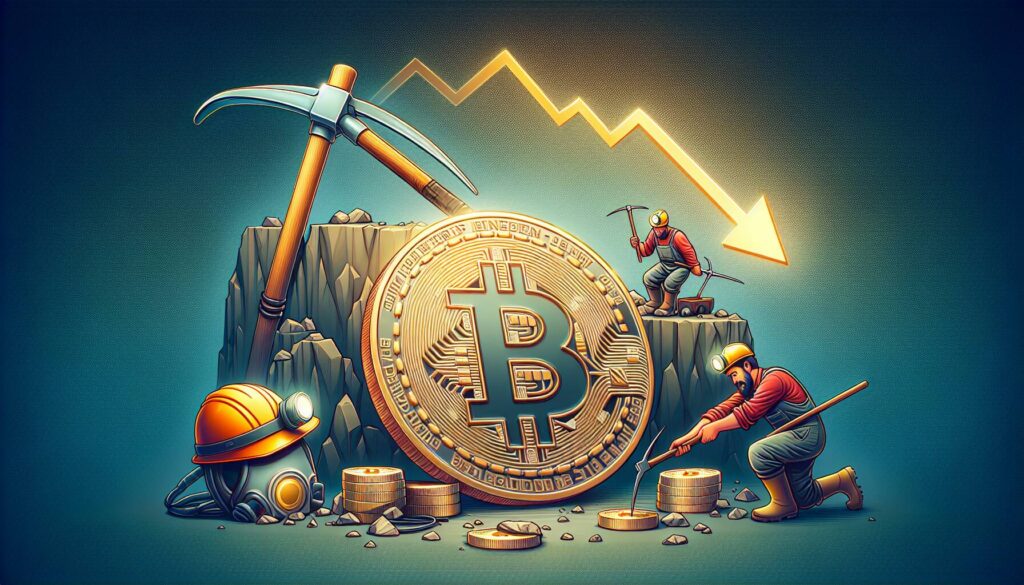Bitcoin (BTC) and Ethereum (ETH) have seen a notable rebound from recent losses, suggesting a potential resurgence in market sentiment. However, the latest data on exchange-traded funds (ETFs) tells a more complex story, with significant outflows from both Bitcoin and Ethereum ETFs raising eyebrows among investors. According to analytics from SoSoValue, Ethereum ETFs alone experienced a historic net outflow of $465 million on Monday, following a $152 million drop just days earlier. Bitcoin ETFs were not spared either, witnessing an outflow of $333 million after a substantial $812 million the previous Friday.
Concerns stemming from renewed inflation in the U.S. and signs of a cooling labor market have tempered bullish sentiment typically associated with Bitcoin options. Although some analysts remain optimistic about the market’s overall trajectory, they emphasize strong economic indicators that suggest the U.S. is experiencing a slowdown rather than a full recession. Chloe Zheng, a research analyst at HTX, noted that the combination of softening labor data and decreasing inflation expectations often precedes rate cuts from the Federal Reserve, which could favor risk assets such as Bitcoin in a volatile environment.
Market forecasts indicate that traders anticipate several rate cuts by early 2026, a factor that could significantly influence crypto market dynamics. Paul Howard, from crypto market-making firm Wincent, suggests that forthcoming U.S. rate changes could propel cryptocurrency prices beyond current all-time highs, particularly in the fourth quarter if the economic conditions align favorably.
Meanwhile, broader on-chain activity appears to be robust, with a record stablecoin volume exceeding $1.5 trillion in July. Notably, Uniswap v4 has surpassed $100 million in trading volume, reflecting ongoing interest and engagement across decentralized finance platforms. As developments unfold in both the crypto and traditional markets, investors remain vigilant, assessing the implications of macroeconomic factors on their strategies and the performance of digital assets.

Key Insights on Bitcoin and Ether Markets
Understanding the current trends in the cryptocurrency market can influence investment decisions and financial planning.
- Significant Outflows from ETFs:
- Ether ETFs recorded $465 million in outflows, a record high.
- Bitcoin ETFs also experienced substantial outflows totaling $333 million.
- Market Sentiment Shifts:
- Long-term bullishness in Bitcoin options has diminished, raising concerns among investors.
- Analysts are warning of potential U.S. inflation risks affecting the crypto market.
- Expectations of Fed Rate Cuts:
- Traders are anticipating three rate cuts by January 2026.
- Potential cuts could lead to an influx of capital into cryptocurrencies, possibly driving prices higher.
- On-Chain Activity Surges:
- Stablecoin volume reached record levels, signaling increased market activity.
- Uniswap v4 trading surpassed $100 million, reflecting heightened liquidity in the market.
- Implications for Investors:
- ETF outflows may indicate fading interest from institutional investors, impacting price stability.
- Anticipated Fed rate cuts could present a favorable environment for risk assets.
- Monitoring macroeconomic indicators and upcoming financial events is crucial for strategic investment decisions.
Comparative Analysis of Recent Cryptocurrency Trends
The landscape of cryptocurrency investments is currently marked by significant ETF outflows, particularly with ether (ETH) and bitcoin (BTC). The record-breaking exodus of $465 million from ether ETFs and $333 million from bitcoin ETFs indicates a troubling turn for institutional investment confidence, contrasting starkly with the spot market, which shows signs of a cautious rebound. This divergence presents a competitive disadvantage for ether and bitcoin in attracting institutional investors, who may now view these assets as riskier amidst potential U.S. inflation and labor-market slowdowns. As a result, traditional investors relying on institutional trends might find themselves at a standstill, unsure of how to proceed in this volatile environment.
Furthermore, while some analysts maintain a bullish long-term outlook—anticipating Federal Reserve interest rate cuts that could propel BTC and altcoins toward new highs—others remain skeptical, noting a shift from bullish sentiment in the options market. The significant drop in long-term bullishness for BTC options serves as a warning signal for potential traders. Investors inclined to hedge against inflation or search for liquidity may face challenges in navigating this mixed sentiment. This creates a paradox where potential gains are accompanied by heightened market volatility, potentially disillusioning long-term holders and attracting only those willing to risk capital in uncertain times.
In contrast, platforms like Hyperliquid have reported soaring trading volumes and open interest in their offerings, marking a shift in trader engagement away from traditional ETFs. This dynamic might spill over into the competitive narrative, benefiting those platforms that provide more favorable trading environments for active traders, while framing ETFs as less appealing in the current market climate. This creates a unique problem for ETFs, particularly if they fail to innovate or adapt to current market demands.
Additionally, entities like Uniswap, with its robust trading volumes post-launch, illustrate how decentralized platforms are effectively garnering interest amid ETF struggles. As more investors turn towards decentralized finance (DeFi) for potentially better yields, traditional ETF structures may risk becoming obsolete for a segment of the market. This shift could see larger, institutional players floundering, while smaller, agile crypto firms begin to flourish, resonating well with millennial and Gen Z investors who prioritize innovation and decentralization over traditional investment strategies.
















